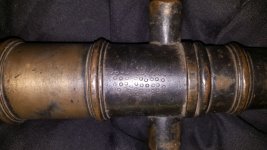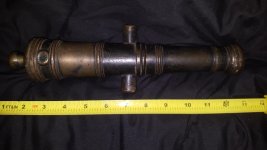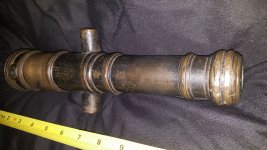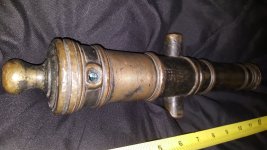Here is some pics of a signal cannon I believe? It appears to be old from what I can tell also it looks like someone tried to clean it in one of the areas unfortunately. It also has some weird wear on the top of barrel near the mounting lugs ( sorry to butcher the actual names of the parts or areas of the cannon. ) any help to I'd this would be great and of course value would be great also. Thanks a Lot everyone this is a great websitemml










Last edited by a moderator:






